Iron deficiency or Anaemia is one of the most widespread nutritional deficiency found in the world. In India alone, 52% of the women in reproductive age are estimated to be anaemic. Numbers are even worse in children. According to National Family Health Survey data, the incidence of anaemia in urban children is 71%, rural is 84%, and overall is 79%.
Women seem to be more effected with iron deficiency due to blood loss every month and lower food intake compared to men.
Ayurveda defines iron deficiency as Pandu roga which is prominently diagnosed with pallor (paling of the skin). This is due to deficiency of the rakta dhatu (read about all seven dhatus in detail) caused by reduction of red blood cells or haemoglobin in the blood.
Pandu Roga is of three types. Pitta type, Vata type, Kapha type, Tridoshic and one that happens due to intake of mud.
Pitta type anemia, is predominantly a result of vitiation of Pitta dosha and caused by blood loss of any kind. The symptoms can present as yellow discolouration of eyes, skin, urine, yellow discolouration of other body parts, fever, diorrhea.
Vata type anemia is vata vitiation, and is due to iron deficiency. The symptoms can present as rough and dry skin, dry eyes, cracking joints, pale skin (pallor), constipation, black stool, low urine output, tremors, giddiness, breathlessness.
Vata type anemia is kapha vitiation, and is Hypo-proteinemic anemia. It presents as cold skin, swelling, white discolouration of eyes, urine, skin, nausea.
Tridoshic anemia can have mixed symptoms of all three above.
There are numerous medications for the diseases which are described in the samhitas of Ayurveda (Lohasava, Triphala And Punarnavadi Mandura being used frequently), but in this article we will focus on the best single Ayurvedic herbs that can help in the management of Anemia.
1. Moringa Leaves
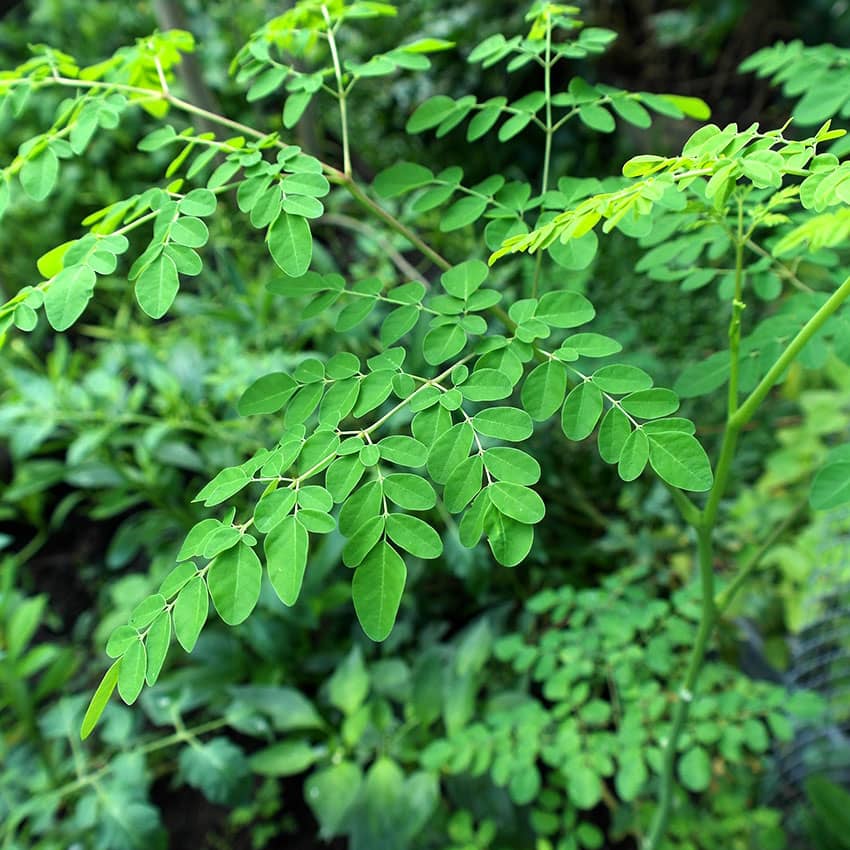
Moringa or The drumstick tree is a widely cultivated plant throughout the world. The leaves, stem and the seeds of the plant are revered in Ayurvedic medicine for its magnificent benefits.
It is highly nutritious and contains rich multivitamins, minerals and phytochemicals. The leaves are very high in protein (30%) and 19 other essential amino acids. They are specially beneficial for anaemia as the leaf powder contains about 490 mg of Iron per kg. They are also high in calcium, phosphorus, potassium, zinc, sodium, manganese, selenium, copper and Vitamins like Vitamin A (beta carotene), C, B (folic acid) D and E.
According an article in science direct, “Moringa is said to provide 7 times more vitamin C than oranges, 10 times more vitamin A than carrots, 17 times more calcium than milk, 9 times more protein than yoghurt, 15 times more potassium than bananas and 25 times more iron than spinach”.
2. Beetroot
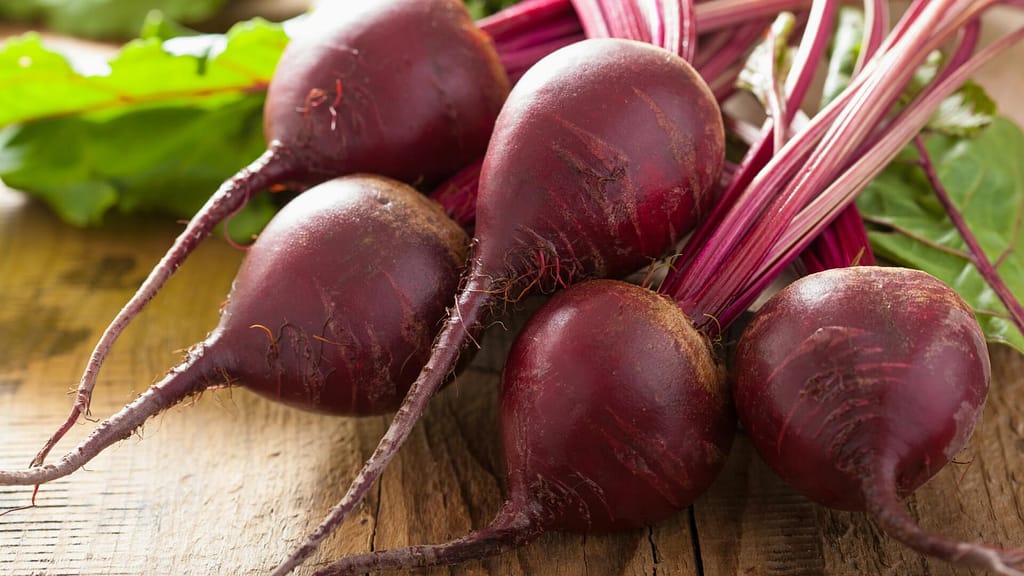
Ayurveda states beetroot juice as an incredible source of Iron, Carotene and Vitamin C. Thus it is beneficial in anaemic individuals. One effective recipe is made by mixing equal amounts of beetroot juice to apple juice and a bit of honey to enhance its taste. This can be taken twice daily to improve iron deposits in the body. Since cup of beetroot in raw form provides 1.1mg of Iron which is 6% of daily iron requirement of an individual.
Beetroot juice is also sometimes traditionally taken with a pinch of turmeric for natural detoxification where turmeric acts as a rich anti oxidant and potentiates anti inflammatory quality of beetroot. However, drinking excess of beetroot juice can change the colour of our urine and stool to pinkish purple which is reversible if excess of intake is curtailed. It is safe to take 1 glass daily.
3. Haritaki
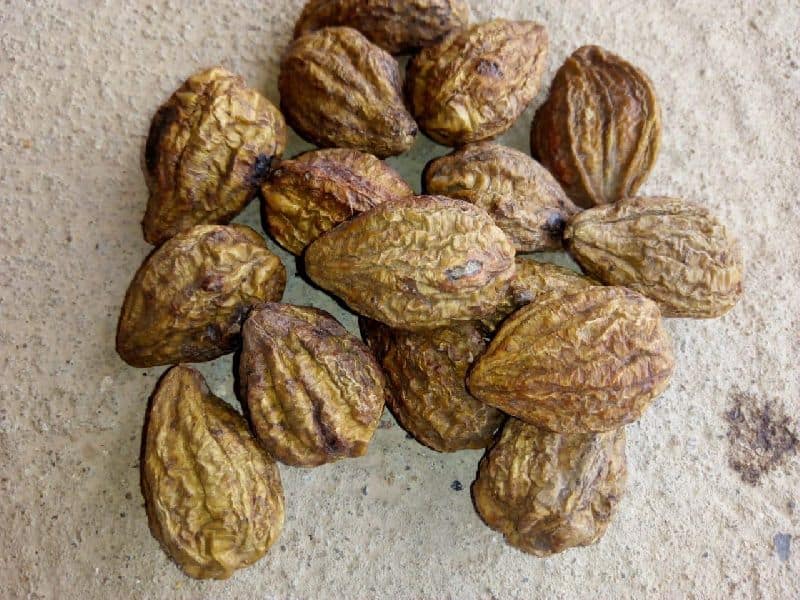
Haritaki is a detoxifying, anti ageing, rejuvenating rasayana and one of the most used herbs of Ayurveda. It purifies the blood, cleanses the digestive system and remedies gastric problems. It is also known to have immense benefits for spiritual growth and mental clarity. These are just a few of the benefits of this magical herb. To read in detail click here.
With regards to iron deficiency or anemia, traditionally it is consumed in combination with jaggery and honey for maximum absorption. This combination is known as Guda Haritaki. A recent study conducted to check the efficacy of Haritaki, on three groups of anaemic people (Group A, B and C being given guda haritaki, only haritaki and placebo repectively) showed that group A which was given guda haritaki showed 17.96% increase in the Hemoglobin percentage. Group B and C showed 14.71% and 1.22% increase respectively.
Haritaki powder can also be consumed mixed with honey and ghee as a remedy for anemia.
4. Hibiscus
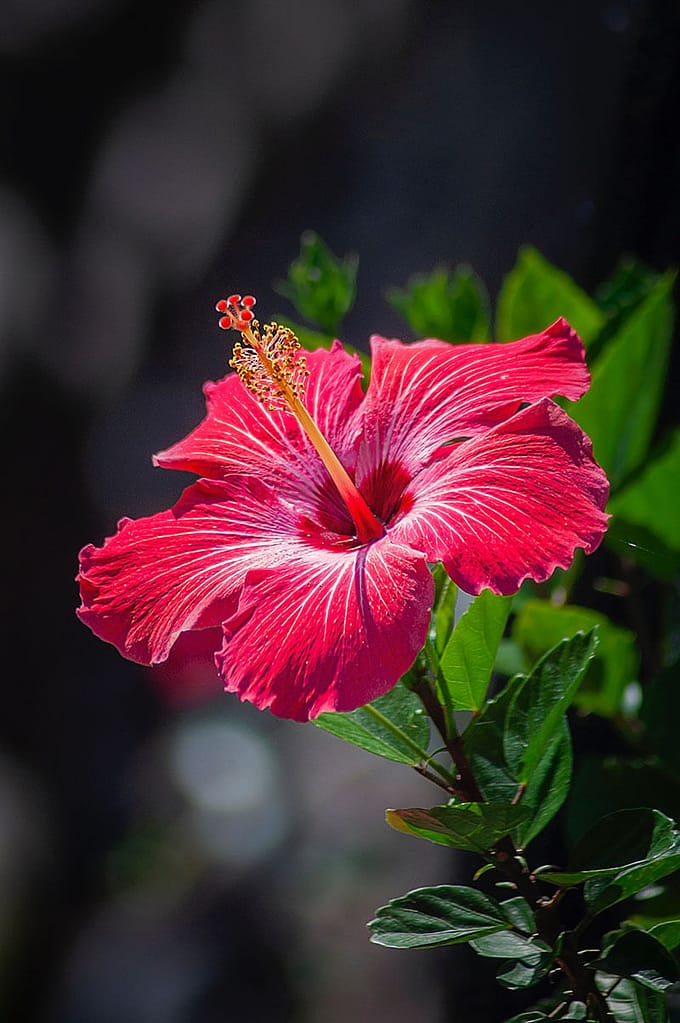
Hibiscus or gudhal is an excellent source of Iron. It contains high levels of iron and ascorbic acid (Vitamin C) which increases the absorption of iron. Many studies and clinical trials have also been conducted in recent times showing the efficacy of hibiscus flower extracts in controlling cholesterol, hypertension, heart diseases and type 2 diabetes.
Recent studies analysing the efficacy of the herb on anemic patients did not see extreme effectiveness on iron levels but showed a good improvement in hematological parameters like Hb and RBC levels. It is also found to be highly effective in case of anaemia during pregnancy which is quite common.
5. Punarnava (Boerhavia Diffusa)
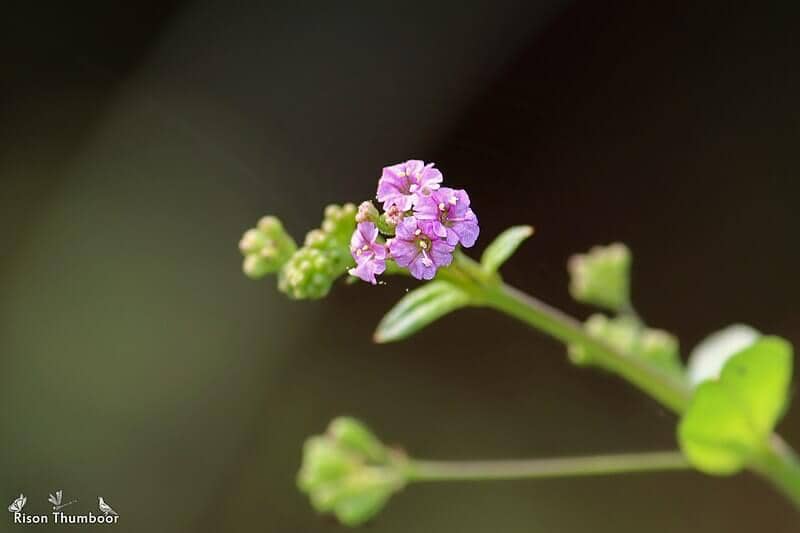
Punarnava is an Ayurvedic herb which is immensely beneficial for treating all kidney and urinary system related diseases. It is Pittakapha Shamaka (pitta and kapha pacifying) and also hepatoprotective, diuretic and antioxidant. To read in detail about the benefits you can check out this article.
The herb is classically given to women that present with anaemia during pregnancy which is known as Garbhini Pandu. It is a very common presentation in pregnant women and Ayurveda defines the reason to be improper Rasa Dhatu in mother and a continuously increasing fetal demand for nutrients. Punarnava Mandura / Madoor is a classical preparation that is used to cure the same.
A Study has been conducted to figure out the nutritional profile of the herb. It identifies B. Diffusa to contain high iron content of about 40mg/100gm.
6. Black Sesame Seeds

Black sesame seeds or Krishna tila, are a very good source of iron and calcium and it can be used very easily in daily life to fulfil the those deficiencies. ¼ cup of sesame seeds contains 5.24 mg iron.
Not just black sesame, but the more common white sesame is also packed with similar nutrients the only difference being that the black variety contains 60% more calcium as compared to the white variety.
Apart from this, black sesame is rich in copper, magnesium, phosphorus, silicic acid, zinc, Thiamine, Vitamin A, B6, K, E, folate, Fibre, Lnoleic acid, alpha linoleic acid, lecithin.
As a home remedy, you can soak 1 tsp of black sesame seeds for 2 hours and make a paste. Consume everyday with honey and milk (use normal temperature milk).
7. Shatavari (Asparagus Racemosus)

Shatavari is a plant, the roots of which are used for medicinal purposes specially beneficial for women health related ailments. It be specially beneficial for female reproductive system, fertility and hormones regulation. It is also a great herb to increase Ojas and immunity.
Shatavari is specially beneficial in curing vata and pitta type anaemia. It balances both vata and pitta and is cooling and calming in nature. As a remedy a tsp of shatavari powder can be consumed in the morning empty stomach and at night an hour before sleep. If anaemia is of pitta type, it should be consumed with milk and not water.
Shatavari ghee can be taken as well in both vata or pitta type anemia.
8. Amaranth Seeds
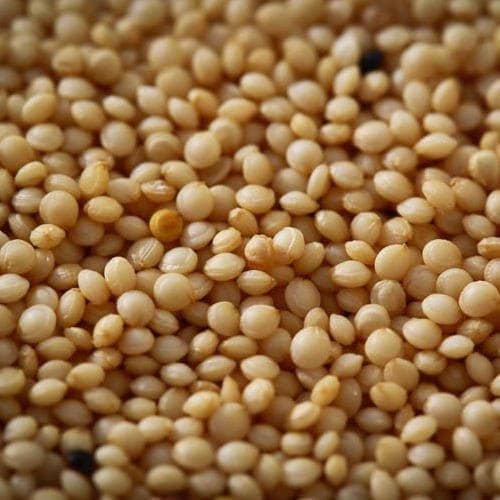
Amaranth, now endowed with the crown of an ancient superfood, is a gluten free rich source of iron, calcium, vitamin B, C, protein and other micro nutrients. It is particularly good for pitta dosha individuals and also helps reduce inflammation inside the body. It is called ‘choulai’ in India and its protein content is higher than even milk. It is safe for consumption in celiac disease, gluten enteropathy and is also a great calcium source for lactose intolerant people. Plus a good fibre rich profile improves digestion in all individuals.
In Ayurvedic context, its juice has been used for the treatment of diaorrhea, constipation, anaemia and bleeding disorders. It is consumed as a juice or even in a raw vegetable form. Oil extracted from Amaranth reduces inflammation and so is now being used in cosmetic products too. Nutty edible seeds formed on the plant of green Amaranth are harvested by scraping ripe spikes of seeds and are used in Indian cuisine since old ages, hence it is edible in varied forms imparting immense benefits.
Did you find this post useful? Would you like to get back to it later? Save THIS PIN below to your Pinterest Natural Living or Ayurveda board!
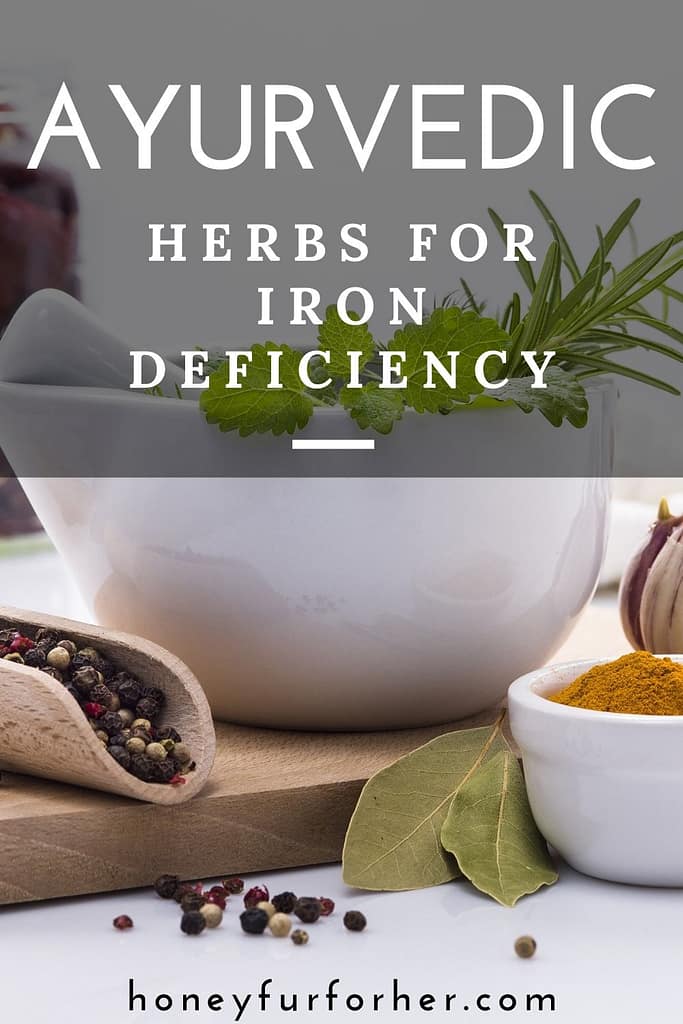

Excellent 🙂👍🙏
I am anemic and I appreciate the data.🌹☺️🙏👍
You are most welcome Indira. Glad you liked the content!
This was very enlightening…I will try some of these as tea.